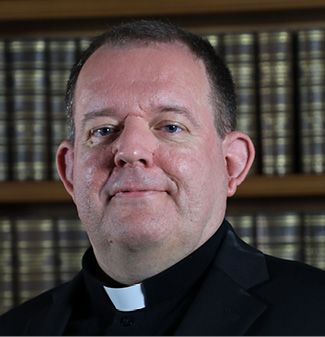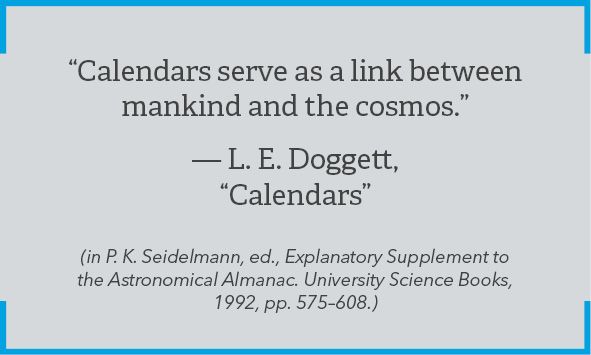
Timekeeping and the need for astronomical conformity


Rev. Paul Gabor, Vice Director, Vatican Observatory, US
Plato’s Timaeus, in sections 37d and 38b‑d, presents time as the annual and diurnal motion of celestial bodies: “a moving image of eternity.” Innumerable classical texts from around the world agree that astronomical cycles are the symbolic foundation of time itself as perceived and lived by human societies.
Calendars are a practical reflection of this principle. Their history manifests the universal desire for timekeeping schemes that symbolically link human lives with cosmic cycles, the civil day symbolically linked to the solar day.

Symbols are rooted in the “collective unconscious” (to use a Jungian term). Let us, therefore, briefly peek under the surface and examine what changes to timekeeping might do to a society’s symbolic underpinnings.
Public understanding of science
The 1985 report on the Public Understanding of Science (Royal Society, UK, also known as the “Bodmer Report”) noted a disconnect between the general public and the sciences. To address this, it encouraged programmes in science communication and education, along with public engagement.
If anything, however, the last 28 years have witnessed increasing, and ever deeper, anti-science sentiments.
The idea that education alone will bring about societal change stems from reductionist anthropology, typical of the 18th Century Enlightenment. The attitude, “Once people understand the rational reasons, they will be compelled to accept the expert point of view,” implies that the only avenue open to rational minds is to agree with technical and pragmatic arguments. There are many non-technical dimensions of our lives, and the assumption is that they can all be discussed rationally.
At the same time, sharing symbols is one of the crucial bonds holding any human society together. If “we” feel “they” belittle “our” symbols, strife follows.
As scientists, we must question everything.
Unfortunately, this has prompted growing numbers of people to feel that experts and other figures of authority have been trampling precious traditions underfoot.
The public debate surrounding the COVID‑19 pandemic has shown how many people are leery of expert advice. One of the reasons could be social alienation, with people feeling left out of the decision process, outsiders in their own world, battered by wave upon wave of rapid, incessant, and incomprehensible change.
The sensitivity of unifying standards
Unifying the standards followed in any set of systems and technologies is rational and practical. From another viewpoint, however, imposing uniformity is a symbolic gesture linked to power, conquest and domination.
That is why we must be doubly careful in this area. Insensitive change can be seen as disrespect, and unifying standards may be viewed as conquest.
The reassurance of astronomical conformity
The principle of astronomical conformity is crucial in civil timekeeping for reasons that go far beyond the purely practical. Although timekeeping schemes like the seven-day week can enjoy the mysterious air of mythical timelessness, their history demonstrates a surprising level of flexibility — provided the underlying symbolism is maintained.
Symbolism depends upon general perception and is somewhat vague in its relationship to exact facts. Thus, as long as we collectively perceive civil time as a reflection of astronomical phenomena, the symbolism can be maintained.
Resolution 4 of the last General Conference on Weights and Measures (CGPM 2022) allows us to do just that. It does not suggest decoupling civil timekeeping from Earth’s rotation once and for all. On the contrary, Resolution 4 presents a temporary compromise, including a process to safeguard the astronomical conformity of civil timekeeping schemes in the long run.
As long as we have described the measure as temporary and refrained from “abolishing” or “suppressing” or “discontinuing” the leap second, we have prevented this particular matter from adding to public unease and alienation.
After all, nobody can presume to have an “ultimate” solution. Furthermore, as the history of timekeeping teaches us, departures from overall astronomical conformity do not last.
The existing compromise
Overall, the 1972 leap-second mechanism that underlies the definition of Coordinated Universal Time (UTC) continues to represent a good compromise between the practicality of a continuous time scale and the symbolism of astronomical conformity. It has been in place for half a century and, although it does require some effort among various groups of time users, those 50 years of practice have demonstrated that we can deal with occasional one-second discontinuities.
This article first appeared in ITU News Magazine: The future of Coordinated Universal Time – part of a series of editions on topics to be discussed at the World Radiocommunication Conference (WRC-23), from 20 November to 15 December in Dubai, UAE.
Download your copy of the ITU News Magazine: The future of Coordinated Universal Time.
Header image credit: NASA
